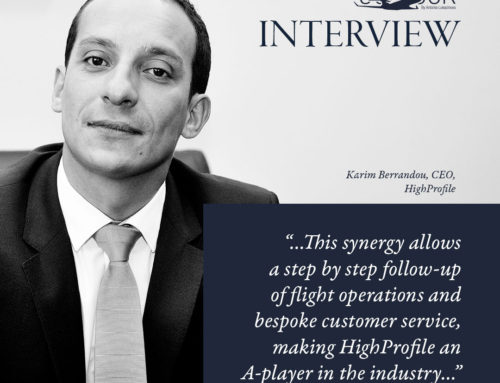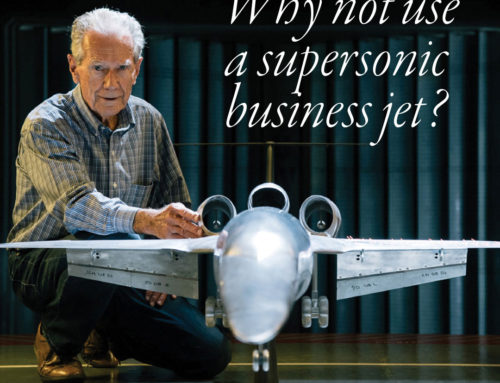Charlotte Pedersen is the Chief Executive Officer of Luxaviation Helicopters, part of the Luxaviation Group headquartered in Luxembourg. The helicopter company is a worldwide organization managing VIP helicopters for private and business clients, specializing in helicopter management and yacht operations with a focus on exceptional high safety, security and quality standards.
Charlotte has more than 25 years of experience in aviation. It all began when she was the first woman to enter the prestigious military pilot programme in the Danish Air Force. Training in the US Navy as a helicopter pilot, she graduated on the Commodores list in the top 20 out of 1000 pilots. She continued her military career attending the Officers Academy and occupied several higher staff positions. While still flying search and rescue missions and being responsible for helicopter safety equipment and training, she was an instructor in the Water Survival Program for military flight crews, a HUET underwater instructor and an instructor for Medical Personnel Operational Training (Open Water Hoist Training).
After her military services, Charlotte worked for the Civil Aviation Authorities (CAA) in Luxembourg as a Flight Operations Inspector for both helicopters and fixed-wing aircraft. She maintained her flying status flying Helicopter Emergency Medical Services (HEMS) in France on a part-time basis. During this period, Charlotte also participated as a volunteer for the European Aviation Safety Agency in working groups focusing on helicopter safety (EHSIT) and human factors (EHFAG).
Undoubtedly, Charlotte’s career speaks for itself and she is one of the most qualified experts to ask on matters concerning helicopters.
We all have a common idea of what a helicopter looks like, how it takes off and lands and so on. We see them in the news and the movies. What are some of the things people aren’t very aware of and why should they be excited about helicopters?
Helicopters equal freedom. With a helicopter, you can take-off and land exactly where you want to. You can avoid traffic jams, congested cities, ferry transfers, train delays etc., and they can take you quickly and smoothly to your destination. Helicopters also often fly at an altitude where you can clearly see everything on the ground. You can enjoy the views and calm your thoughts while safely travelling from A to B.
Helicopters are also fun! They are very maneuverable and only require a small and open space to land. Even though they seem to be complex operating machines, their mechanical skeleton is rather simple and makes it easy for pilots to detect irregularities well in advance. This is something which also makes helicopters one of the safest means of transportation we have. The European Aviation Safety Agency (EASA) published the 10-year average safety figures for all aviation activities in Europe in their annual safety report for 2017. In this report you can read that commercially operated helicopters have been “almost” twice as safe as commercial airliner transportation over the last decade.
This is of course because operating to commercial standards means that pilots are trained in simulators as well as the operating environment. Nothing is left to chance and an operation is established where it is also acceptable to say no to a flight if, for example, weather conditions are poor.
For me, helicopters are one of the best inventions we’ve achieved in transportation.
They are used worldwide for saving lives and providing support during evacuations and firefighting. We use them for agricultural purposes and scientific expeditions. We also use them for transportation purposes to offshore locations such as oil drilling platforms, ferries and yachts. Finally, they are an ideal transport solution for the high-density, congested cities around the world.
You are beyond any doubt an authority on flying helicopters and how helicopters are used. When purchasing a helicopter or acquiring its services, what are the most important things to keep in mind?
The most important thing is to be fully aware of why you need a helicopter and remember to include your future ideas and plans too. After that, you need thorough advice from an expert in the field with no relationship to any particular helicopter type. When you’ve decided which type and size of helicopter you want, my best advice is to have a professional company support you with the purchase and eventually also the operation afterwards. This way, you’ll make sure you won’t miss any important details that may later turn out to be very costly. Helicopters are not cheap to operate, and the insurance is especially often rather expensive. However, if you join a commercial operator, they often have much better contractual agreements in place with the suppliers needed for your operation than what you can achieve as an individual owner.
Many small airlines provide short range air transportation in small aircraft. What are some considerations to add to helicopter services?
Helicopter services can often save you time by connecting you point to point, instead of airport to airport. Also, in many regions of the world, helicopter transport can be a safer means of transportation. Not all airports have long international runways and equally high standards and not all are situated in ideal locations. Unfortunately, the only air transportation often available at these locations is in single engine, single piloted aircraft. Why? Because you can only use small airplanes on short runways and they can be flown by a single pilot. This may be a cheap solution for your transportation needs. Is it the safest and best? Not necessarily…
A better solution, in my opinion, would be to also offer helicopter services. The safest option for this type of transportation is, of course, to use multi-engine helicopters. These helicopters can safely transport passengers from A to B and do not need a runway or a specific approach path to safely land. Plus, the twin engine configuration is obviously a high safety factor.
If you need transportation over water, then floats can be added to the helicopters, which enables safe landing on water in the case of an emergency. This is an option that you don’t have with airplanes.
Change happens, innovations, new technologies, different applications, but also changing requirements and expectations. What can we expect in the future of helicopters and other rotor blade flying machines?
Innovations are great and help us overcome difficult or frustrating situations. In the rotorcraft and drone areas, we’re seeing a lot of development. Flying vehicles, air taxies and other inventions are on the way. I personally find it very exciting but also challenging. The largest challenge is probably that flying vehicles are being prepared to solve issues in condensed road traffic and so, they’re built for short hops and not long-distance flying. Our major capitals though aren’t prepared to accept this kind of flying traffic. Landing areas are missing. City planners and local governments are not overly inspired and even less are the inhabitants. Our aviation regulations are also not yet prepared for these inventions. So, even though it’s possible today to take a short tour in a self-piloted flying vehicle, we’re still a long way away from having them parked in every garden and on every rooftop.
I am convinced though that in the future this industry will take over some of the tasks where traditional helicopters are used today. In January, we saw a drone deliver life vests to one or two people in trouble off the coast of Australia. That’s great! If we can use drones for firefighting and tasks like these, we will advance while also reducing riskier operations.
If you had magic and all the freedom and resources available, what would be your vision of an ideal helicopter and how it is used?
My ideal helicopter would be with a hybrid engine, running mainly on electricity but with a backup. It would seat six to eight people, have retractable wheels, all possible avionics including a joystick for flight control (so, you don’t get back problems as a pilot), very low noise levels, floats, icing capabilities, a cruising speed of around 150 knots, three to four-hour range, NVG capability, easy access for passengers with electrical step, all the modern applications of connectivity, reclining seats, cup holders, a large luggage door that lets you fit different sizes of luggage, including ski or golf equipment and it should be designed by Henrik Fisker, because I love his car-designs. Included in the price should be a repaint every year, so you easily could change style. Plus, it should have an espresso machine on board!
Leadership is something you have shown throughout your career. What is your personal definition of leadership and what is needed to be a true leader?
The older I get, the more I realize that business and leadership is all about people and people management. If you want to be a good leader, you must enjoy working with other people. You shouldn’t only be interested in your own life and success, but in the life and success of your employees, your clients, your work partners, and it has to come from your heart. If you want to lead and not just manage, you must be able to find and develop the best in everyone. Not everyone can be treated the same way. Some need more attention, some need more guidance, some like high goals and some have lower goals. Leadership is, of course, also about reaching the goals of the company or the team, but without support from the people you’ve employed, it will be difficult.
You also need to understand yourself very well and know your own weaknesses. The team you work with is selected because they’re better than you in individual areas. Don’t be afraid to hire someone who is smarter than you. If you want to win, you’ll need the very best to support you. It’s all about attitude too. If your team has the right attitude, they’ll learn and improve themselves. In my opinion, it’s much more important to have people with the right attitude around you with the motivation to learn the skills they might be missing than to have a team of people with the right skills but the wrong attitude.
Almost every aspect of your career, whether in the military or in the private sector, is about discipline, serious challenges, always being alert and prepared, and responsibility. What does your private life look like and what are the things you like to do when you’re off duty?
In my private life, I’m a normal mother, wife, sister, daughter and more, who likes to make pancakes on the weekend, walk the dog, enjoy life with family and friends, read books and learn about new developments in technology, other businesses, medicine, research, etc.
I try to do some running on the weekends. I’m a very slow jogger! I will find all kinds of excuses why I shouldn’t go out and exercise, but luckily, my friends don’t accept them and so…out we go! I also like to study. I have a whole list of courses and educational programs I would love to get involved in. If I only had the time…





